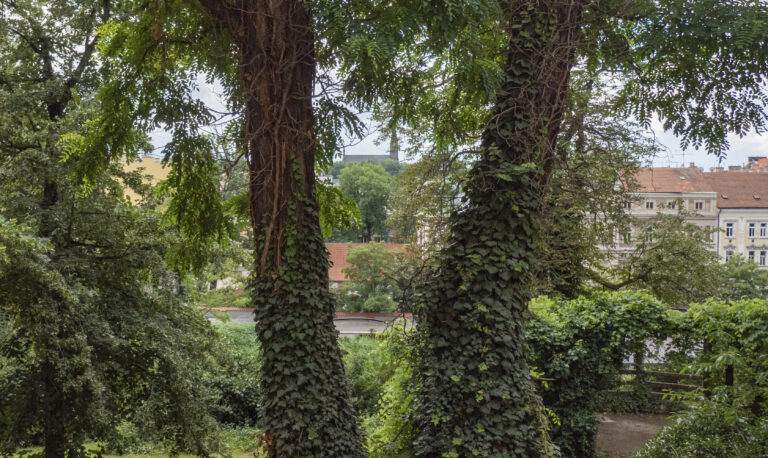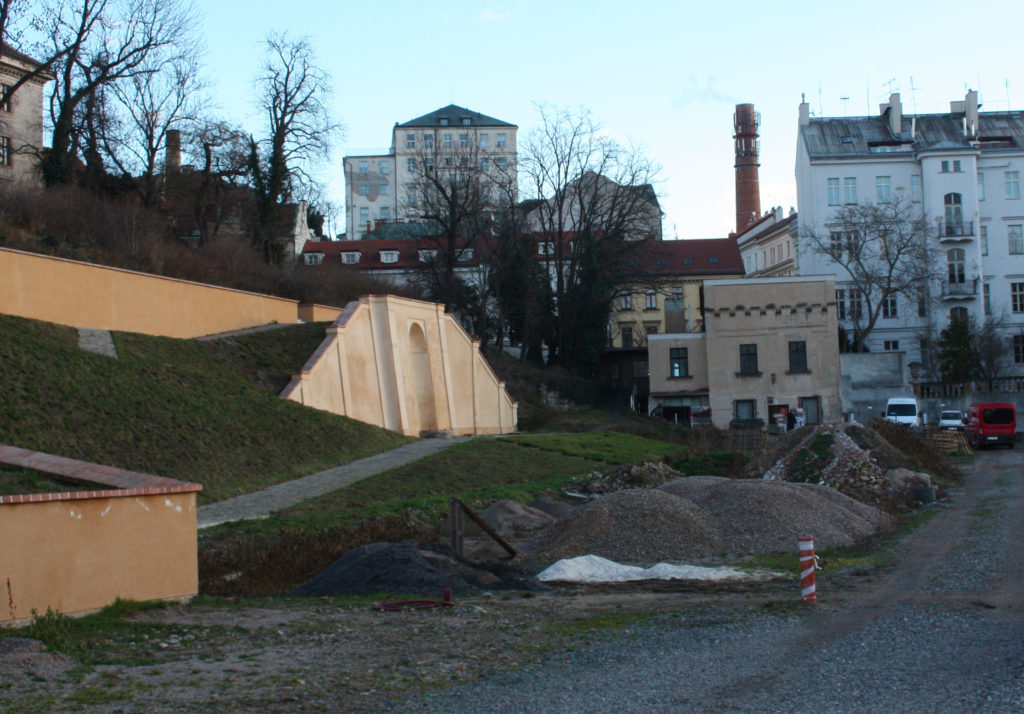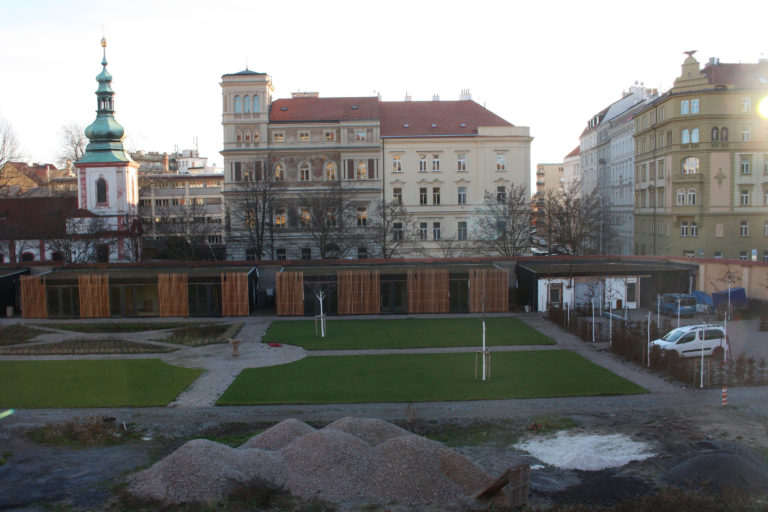Monastery gardens
History of the North garden
The size of the monastery area was already determined, after the monastery was founded in 1347. Originally, the Emmaus monastery gardens extended as far as Moráň, including a cemetery in the northern part and even vineyards in the Middle Ages.
In 1857, however, the monastery sold the land to the New Town brewer Jan Michael Šáry. The history of the place that had been connected with the monastery for centuries thus began to take a different direction, yet it is still worth mentioning it at least briefly. The brewer Šáry had extensive cellars excavated under the property for the production of bottom-fermented beer. He was inspired by the success of Pilsen beer made by using this technology. In 1861, the Na Slovanech restaurant was built on the site. Jan Michael Šáry is also the founder of the Secondary School of Food Technologies operating today in Podskalská Street. After it was established in 1868, it was called "The First Public Malt School in Prague". The new brewery, very modern in its time, was built on "Slavic Hill" in the early 1880s. The first batch of beer was produced in the spring of 1883. Despite promising beginning, it basically ceased to exist in 1900, due to changes in ownership and management often being associated with premature deaths. After the brewery's demise, a restaurant continued to operate for some time and its ballroom was then used as a cinema; the brewhouse building was adapted to a car workshop. The entire development of the north garden site was severely damaged in an air raid in February 1945 and at the turn of 1960s and 1970s it was replaced by a complex of buildings of the Chief Architect’s Office (National Committee of the Capital City of Prague), now the Institute of Planning and Development of the Capital City of Prague.
South garden
The southern garden, bordered by Vyšehradská, Trojická and Pod Slovany streets, has always retained the character of a private monastery garden for the Benedictines to work, rest and meditate.
The monastery sold a part of the crops it grew; in the early 1930s abbot Arnošt Vykoukal had heated greenhouses built under the hillside, possibly replacing the former hotbed. The maintenance of the garden stopped after the Benedictines left in the 1940s and then again in 1950. The land became neglected. In the 1970s, sports areas were set up in the lowermost flat part: playgrounds and tennis courts, as well as a playground for a kindergarten. Their management gradually abandoned them after 1989 as unsuitable or unprofitable.
...you can travel back through time by swiping
Garden view to Vyšehrad
 HISTORY
HISTORY
 PRESENT
PRESENT
West view of the garden
 HISTORY
HISTORY
 PRESENT
PRESENT
The garden’s reconstruction
The garden’s reconstruction project began in 2010. The lower flat part is based more on the Baroque concept and the terraces of the upper slope follow the late 19th century arrangement. In the lower part, the garden will be split into rectangular fields, imitating the basic scale layout of the cloister yard. These fields will further emphasize the garden’s utilitarian function, including the planting of fruit trees, aromatic and medicinal plants or vegetables.
A section will be completely designated for current demands: a cafe, a playground, a sheltered workshop or a medical office will be located in the ground-floor buildings next to the wall at Trojická Street. The upper slope will retain the character of an intimate walking area intended for relaxation and meditation. As far as the historical elements, the grotto restoration along with Our Lady of Lourdes is planned.
The speed of the work that started in 2018 depends to a large extent on the financial solvency of the project: the Emmaus Monastery is funding it from its own sources, without the support of subsidies and grants. Once completed, the garden will be open to public and be a pleasant oasis for Prague residents and other visitors. If you like this project, you can support it too.
...you can travel back through time by swiping
...you can travel back through time by swiping
Jihozápadní pohled do zahrady
 HISTORY
HISTORY
 PRESENT
PRESENT


